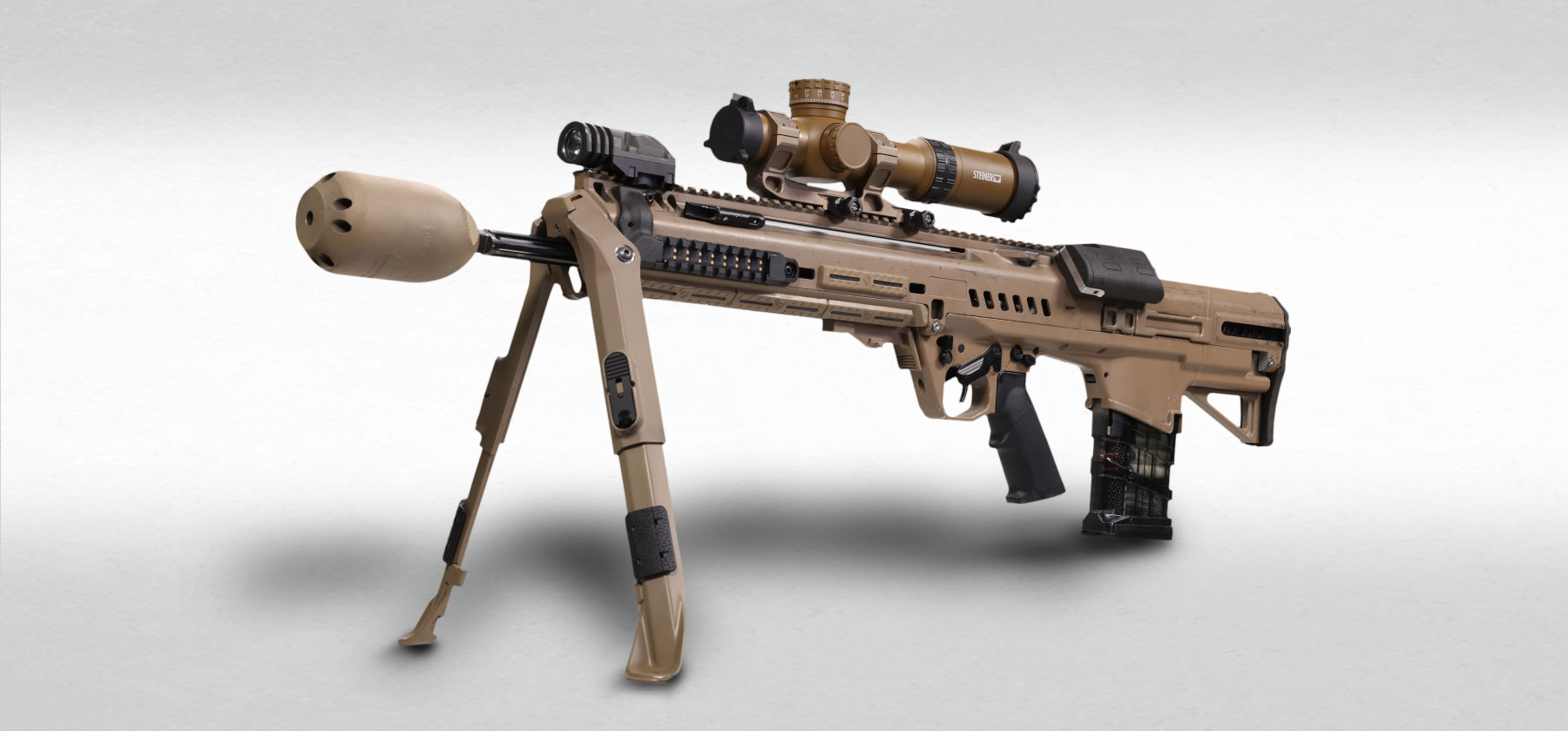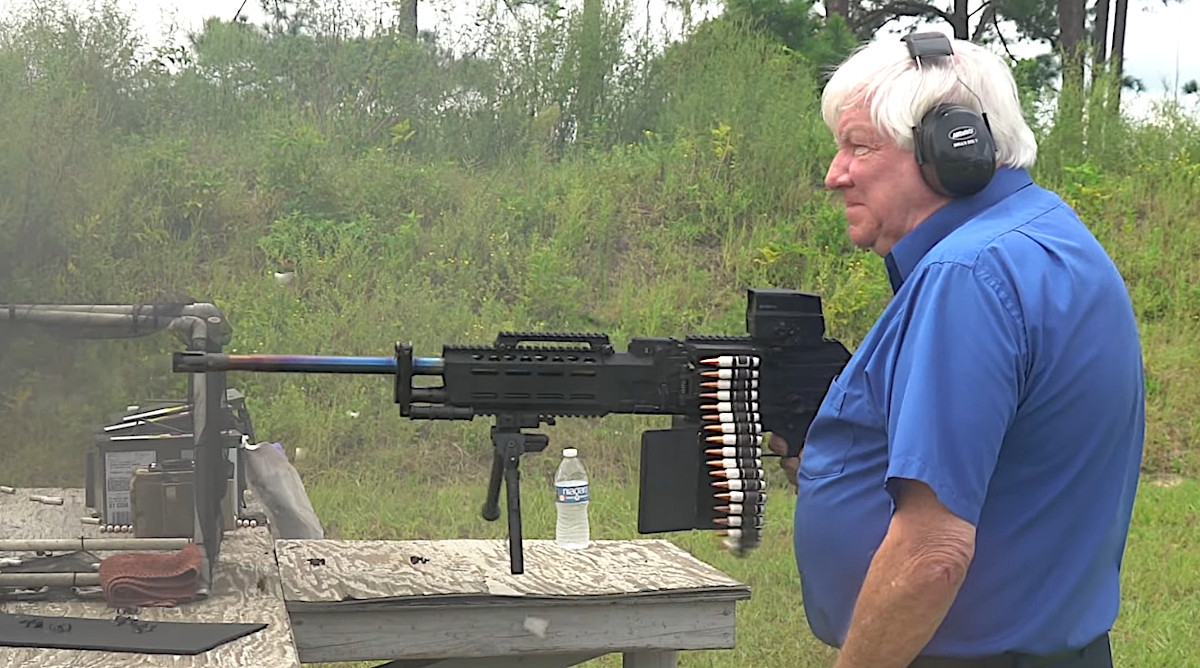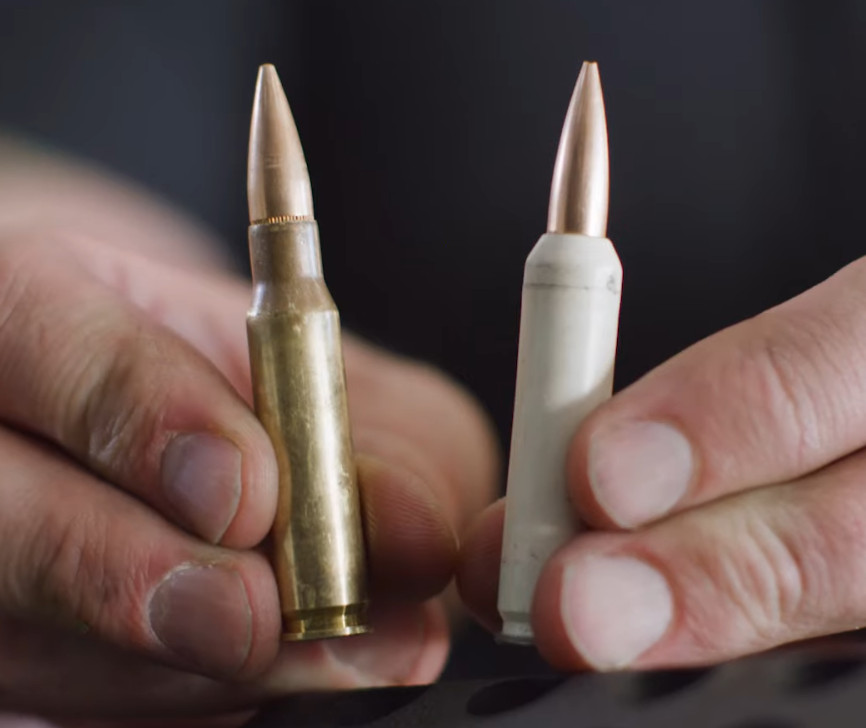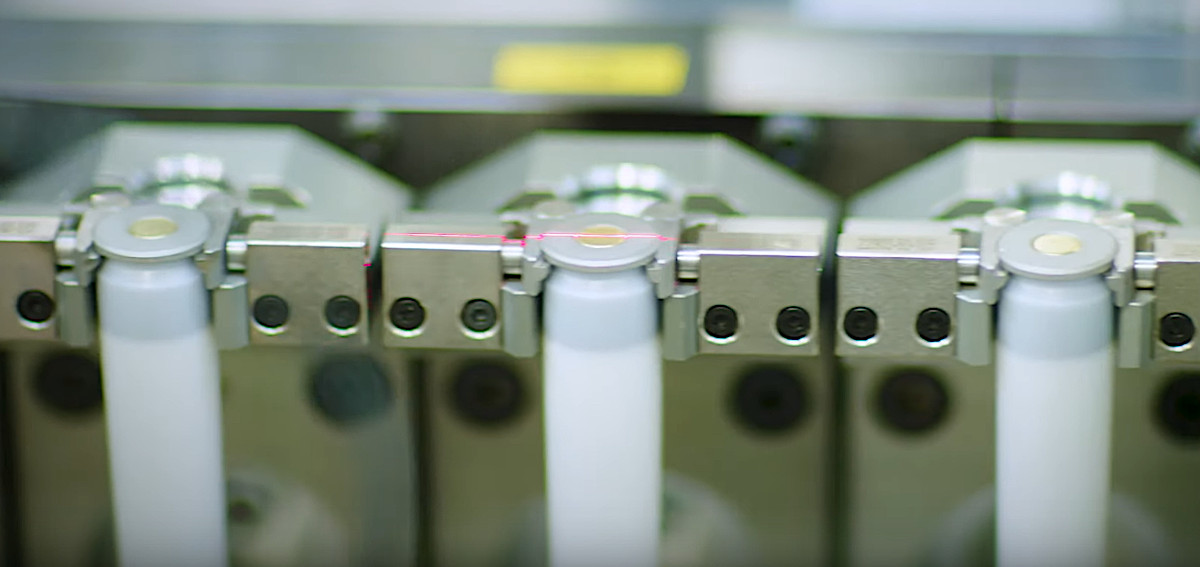Ammunition manufacturer True Velocity has test-fired an M134 Minigun, among other weapons, chambered for its 6.8mm TVCM cartridge. The company says that the round’s design means that all that you need to do to convert guns that use 7.62x51mm ammunition to fire it, in many cases, is to perform a simple barrel change. True Velocity originally developed this 6.8mm ammunition for General Dynamics Ordnance and Tactical Systems, as part of that company’s submission for the U.S. Army’s Next Generation Squad Weapon program.
True Velocity announced that it was working to expand the potential applications of its 6.8mm TVCM round in a press release, and accompanying video, which it issued last week. In addition to the M134 Minigun, the company said it had tested its new ammunition in a rechambered M240B machine gun and M110 marksman rifle. All three of these weapons are presently in Army service, as well as in use elsewhere across the U.S. military.

The video, seen above, also shows tests involving the Knights Armament Company (KAC) Light Assault Machine Gun (LAMG) and Remington 700 bolt-action rifle, as well as variants of the RM277 weapon system, which you can read more about here. The RM277 family, developed by Beretta in cooperation with General Dynamics Ordnance and Tactical Systems (GD-OTS), is currently competing against designs from SIG Sauer and Textron as part of the Army’s Next Generation Squad Weapon (NGSW) effort.


“True Velocity is an American-owned, American-based company that set out with a singular goal in mind, and it was to provide the American warfighter with an unfair advantage on the battlefield,” Patrick Hogan, True Velocity’s Chief Sales and Marketing Officer, said in a statement. “The Next Generation Squad Weapon program has given us the opportunity to do that … Not only do we have this forward-leaning momentum with next-generation capabilities, but we have a plug-and-play application that can be fielded on the battlefield today with weapons that our soldiers are carrying into battle.”
True Velocity describes the 6.8mm TVCM cartridge as offering as “switch-barrel capability” for weapons that fire the 7.62x51mm round, a NATO-standard design that was first developed in the 1950s. This has to do in no small part with the fact that the 6.8mm TVCM’s cartridge case is also 51 millimeters in length and is very similar in size and shape to the one used on the older 7.62mm design. The front portion of the case is notably different, but a complete barrel assembly typically includes the firing chamber, which would also have to be resized to make the change from 7.62x51mm to 6.8mm TVCM.
“What we’ve done is basically made a round that is the same size as a 7.62, but this round here, the new [6.8mm] round, has much more energy, than what this round does, by far,” Lonnie Burrow, True Velocity’s Chief Research and Innovation Officer, says in the recently released video.

“You’re talking about something as simple as pulling a barrel off the M240 and replacing it with one that accommodates 6.8 TVCM,” Hogan added. “All of a sudden, you’ve increased the effective range of this weapon by more than 50 percent … and you’ve given our soldiers a meaningful advantage on the battlefield.”
For reference, FN America, the U.S.-based subsidiary of Belgian gunmaker FN, which makes M240Bs for the Army, says on its website that its approximate maximum effective ranges against point and area targets, using typical ammunition, are around 2,624 feet and 5,900 feet, respectively. A 50 percent increase would mean the gun could be employed against area targets up 8,850 feet away.

With all this in mind, it would also seem likely that the 6.8mm TVCM would be able to use many types of magazines and other feeding systems designed for the 7.62x51mm cartridge with, at most, minimal modifications.
In addition, True Velocity says that the 6.8mm TVCM round, when fired, produces pressures that are very similar to those generated by common types of 7.62x51mm rounds. What this means is that guns that are designed to withstand the force of shooting 7.62x51mm ammunition are not at risk of exploding or otherwise failing catastrophically, and should generally function reliably, when firing True Velocity’s 6.8mm rounds. This would also, in principle, suggest that the 6.8mm ammunition would not cause significantly greater wear and tear on those weapons.
The 6.8mm TVCM round also uses a polymer cartridge case, which True Velocity says makes it 30 percent lighter than brass-cased 7.62x51mm rounds. While polymer-cased ammunition of various types in different calibers has been in development for decades now, materials science advances have made such designs increasingly safer and more reliable.

It is a well-established fact that the average combat loads for individual personnel have only gotten heavier over the years. Polymer-cased ammunition has long been held out as one potential path toward reducing the burden troops have to carry, without them having to carry less ammunition, or as a way for them to carry more rounds without incurring any additional weight penalty. Any weight savings could also enable them to carry additional items, if desired, again without increasing how heavy their overall loadout is.
The reduced weight of the 6.8mm TVCM could be just as beneficial for use with guns mounted on vehicles or aircraft. Many helicopters, for instance, have to operate at reduced gross weights, which could mean carrying less ammunition for defensive machine guns, to maintain performance in hot-and-high environments.
“We went down to Dillon Aero. We took the M134 rotary machine gun, the Minigun, and with nothing more than a barrel swap and a couple of minor adjustments to that weapon, you’re now firing 6.8 through the Minigun and significantly increasing your effective range and lightening the load, not only for the guys on the ground, but also for our rotary-wing assets,” True Velocity’s Hogan said in the recently released video.
All told, True Velocity’s 6.8mm ammunition would certainly seem to offer a relatively simple and low-cost way to improve the effectiveness of guns designed to fire the 7.62x51mm cartridge. The nature of conversions means that it should be possible to readily convert back and forth between the rounds, allowing the use of existing stocks of ammunition for operational or training purposes, as desired.
It’s also worth noting that SIG Sauer and Textron have also submitted their own 6.8x51mm ammunition designs as part of the Army’s NGSW program requirements. Depending on how these rounds are designed, it’s possible that these companies could also offer conversion kits for 7.62x51mm guns.


What’s perhaps most interesting about True Velocity testing of the 6.8mm TVCM cartridge in various types of guns in use or otherwise on the market now is that the company would seem to be not only hedging against GD-OTS losing the Army’s NGSW competition, but that competition getting canceled entirely.
“At True Velocity, we see this more as an ammunition program than a weapon program,” Hogan, the company’s Chief Sales and Marketing Officer, says in the video. “I think the Army’s assumption was that in doing and achieving that enhanced level of ballistic performance, that we were going to have to deal with higher than normal chamber pressures, thus the need for next-gen weapons.”
“If True Velocity’s 6.8[mm] TVCM is capable of achieving that level of enhanced ballistic performance, while keeping chamber pressures at a normal operating level, then it begs the philosophical question, do we really need these next-gen weapons?” he continues.
There’s no indication that True Velocity is not fully committed to GD-OTS’ entry in the NGSW program, but Hogan’s comments are certainly interesting when considering what Army General John Murray, head of Army Futures Command, told members of the House Armed Services Committee just this week.
“That is a future decision to be made, very much dependent on the prototyping we have going on now,” he said when asked about the timeline for when NGSW variants might begin to replace existing M4 carbines and M249 Squad Automatic Weapons (SAW), both of which fire the 5.56x45mm round. He added that it could take three to four years for government-owned plants to begin mass production of new 6.8mm ammunition and that many soldiers would likely at least conduct some level of basic training with existing weapon types for some time to come.

The Army has also talked publicly in the past about limiting the fielding of NGSW guns to only certain combat units. A few years ago, the service also briefly considered adopting a new 7.62x51mm battle rifle as an interim way to get small units improved range and terminal performance over their existing M4 carbines.
As The War Zone has explored in the past, the costs and logistical factors that surround the replacement of hundreds of thousands of guns and millions of rounds of ammunition have led the Army to abort plans to adopt new standard infantry rifles and other small arms on multiple occasions in the past three decades. The debacle surrounding the development and ultimate abandonment of plans to adopt the XM8 rifle, a modular design readily adaptable to other roles that you can read about more here, is a prime example.

It’s also worth noting that the U.S. special operations community has also been pursuing the acquisition of new rifles and machine guns with a focus particularly on increasing range and ballistic performance over existing weapons. However, these guns will shoot 6.5mm rounds unrelated to the 6.8mm designs being tested as part of the NGSW program.
Whatever the case, True Velocity is certainly making a compelling case that, if the conversion process to 6.8mm TVCM is truly as simple as the company says it is, there is another option for increasing the combat effectiveness of units equipped, even in part, with guns chambered to fire 7.62x51mm ammunition.
Contact the author: joe@thedrive.com
